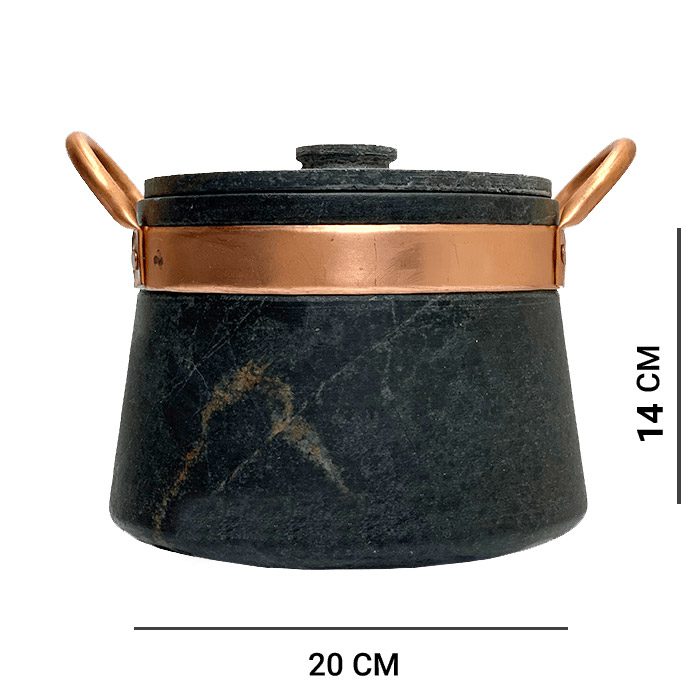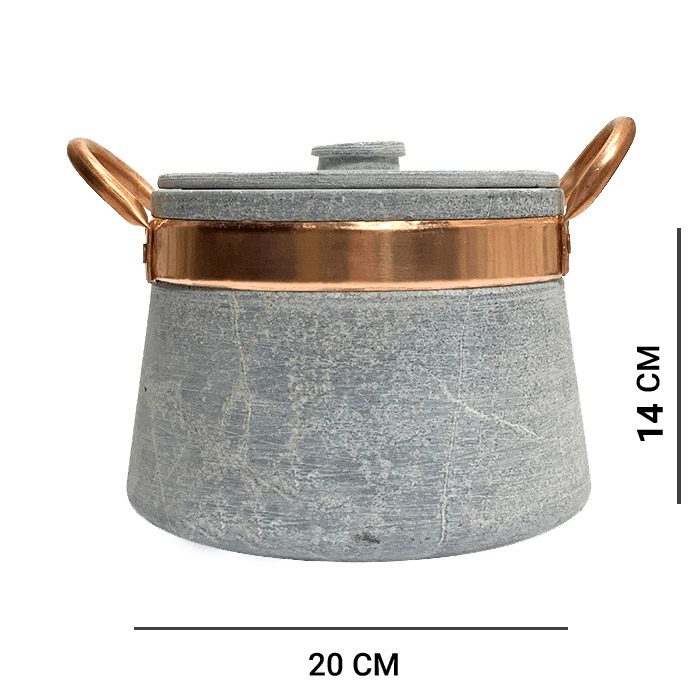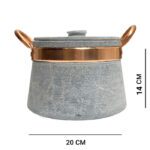What Kind of Stone Is Used to Make a Stone Cooking Pot?
Stone cookware has been used for thousands of years, and today it is considered one of the healthiest and most natural ways to cook. These pots are crafted from a type of metamorphic rock known as talc schist, commonly referred to worldwide as soapstone. Because soapstone is soft and workable, it is ideal for crafting food-safe cookware.
Research shows that talc schist deposits are rare globally. One such location is near Mashhad, Iran, around the Hezar Masjed mountains. For millennia, stone cookware has been made in this region. In 1974 (solar year 1353), a joint archaeological mission from Iran and France discovered 60 stone tools in the Mashhad area, dating back between 800,000 and 1 million years, marking them among the oldest known human-made tools in Iran and Southwest Asia.
Historical and Cultural Significance
Historical sources also recount a tradition associated with Imam Reza (a.s.) about 1,200 years ago. Upon arriving in the region near Sanabad, he leaned against a mountain known for its stone pots and prayed:
“O Lord, bless the people with benefit from this mountain and from the foods they cook in its stone pots.”
He then requested that stone pots be made from that very rock and instructed that his own food be cooked only in these pots. (Source: ʿUyūn Akhbār al-Riḍā, Sheikh Ṣaduq, Vol. 1, p. 147)
In Iranian cuisine, stone cooking pots of the “Royal” model are also known as dizi sangi or stone casserole pots.
Key Features & Specifications
- ✅ One-piece construction, free of cracks or defects, with a copper handle
- ✅ Made from soapstone mined near Hezar Masjed, Mashhad
- ✅ Ideal for preparing liquid-rich dishes like dizi, soups, stews, and khoresh
- ✅ Designed for 6 servings
- ✅ Rich in iron, silica, and trace minerals
- ✅ Precision-crafted with CNC technology for elegance and durability
- ✅ Can be used on stovetops and in ovens
- ✅ Typically shipped unseasoned; you may season it upon arrival
Benefits & Cooking Properties
- Energy Efficiency: Because soapstone slowly absorbs and radiates heat, it requires less energy to cook food evenly. This minimizes evaporation and helps retain minerals in your ingredients.
- Pure Flavor: Stone pots remain inert in contact with food. Their smooth, polished surface ensures nothing sticks, making cleanup simple.
- Faster Cooking: While not a pressure cooker, stone pots can cook meats thoroughly over low heat in about 2 hours, thanks to heat retention.
- Effortless Cleaning: The dense stone resists bacteria and can often be cleaned with mild detergent, warm water, or a vinegar solution—no harsh scrubbing needed.
Other notable features include high iron content for dietary benefit, silica for bone and skin health, high heat tolerance, and seamless structure with copper handle.
How to Use a Stone Cooking Pot
Seasoning & Preparation
- Apply ghee or olive oil to both the interior and exterior surfaces.
- Place the pot in a warm, ventilated area for three days to allow the oil to penetrate the stone (e.g. beside a heater or in sunlight).
- After three days, wash gently and begin using according to instructions.
Important Usage Notes
- Avoid frying or searing; use the pot for liquid-based dishes like dizi, soups, stews, and rice.
- Cook over low heat only.
- If additional water is needed during cooking, use hot water.
- Avoid thermal shock: don’t wash the pot while hot or move it suddenly from heat to cold.
- Use a flame diffuser or spreader if placing directly on gas burners.
- Never heat an empty stone pot.
- Handle with care to avoid dropping or smashing.
Repair Methods for Cracked Stone Pots
If your pot develops cracks, don’t worry—you can often restore it:
Method 1
- Fill the pot with water nearly to the top
- Add 1 tbsp turmeric, 1 tbsp starch, 1 tbsp tomato paste, plus 250g ghee
- Simmer gently for 10 minutes
- Turn off heat and let the pot cool fully before washing
Method 2
- Mix egg white and lime to form a soft paste
- Clean the pot thoroughly
- Apply the paste to both inside and outside cracks, filling them completely
- Let it dry for several hours
- Wash gently and allow to dry before use






Reviews
Clear filtersThere are no reviews yet.